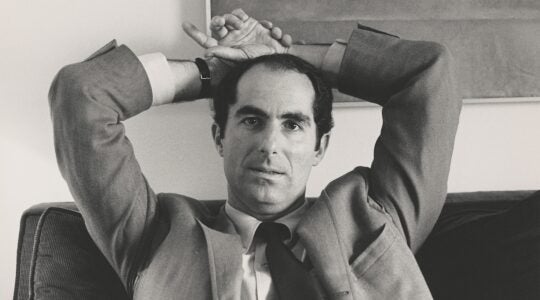We all agree that a responsible government must have a strong, punitive justice system that maintains order and security. More harmful to our justice system than not catching the guilty, however, is punishing the innocent. Unfortunately, this happens too often.
There are six primary reasons for wrongful convictions:
1. Eyewitness misidentification: Some of the reasons for why eyewitnesses identify the wrong person are not fixable, such as the fact that people are much worse at cross-racial identification, but there are many things that police can do when conducting line-ups that would decrease false identifications.
2. False confessions: A recent example of this is the case of the Central Park Five, in which four of the five then-teenagers confessed to raping and killing a woman in Central Park years ago, and recently were proved innocent through DNA testing.
3. Bad lawyering: Defense lawyers mess up, either because they just are not good lawyers or because they are so overburdened that it is impossible to do a thorough job on each case.
4. Police and prosecutorial misconduct: Examples of this include crime labs claiming that they had test results when no tests were actually performed, and prosecutors and police hiding evidence pointing to another suspect. Unfortunately, these people are rarely punished.
5. Junk science: This applies both to methods that are not really science when empirically tested, and to legitimate science performed poorly.
6. Snitch testimony: Witnesses, usually in jail, come forward claiming to have heard the suspect confess in order to get favorable treatment on their own cases.
How many prisoners are actually innocent? Over the past decades, experts have offered varying percentages: Samuel R. Gross and Barbara O’Brien estimated “at least 2.3 percent”; Jon B. Gould and Richard A. Leo put it at 3 to 5 percent; James S. Liebman et al. place their estimate at 7 percent; and the newest estimate, by John Roman et al, places its estimate at 5 percent, except for sexual assault, for which the wrongful conviction rate may be as high as 15 percent.
Jewish law strongly upholds the principle that the innocent should not be punished. When G-d reveals to Abraham his plan to destroy Sodom and Gomorrah (Genesis, 18:17-33), Abraham challenges G-d: “Will you also destroy the righteous with the wicked?” When G-d offers to spare the cities if there are 50 righteous people, Abraham solicits for forgiveness if there is a number slightly lower; eventually, G-d decides that if there are even 10 righteous people, he will spare the cities. Thus, from the time of Abraham it was important that punishment should be reserved for the guilty, and the innocent should be spared.
Today, there are those who are dedicated to ensuring that the innocent do not languish in jail. The National Registry of Exonerations, a joint project of the University of Michigan Law School and the Center on Wrongful Convictions at Northwestern University School of Law, has now recorded 1,040 exonerations in less than a year of investigating data since 1989. The Registry helps highlight the need to scrutinize convictions (especially in the states with the most exonerations, such as Illinois and Texas) to make sure that they were honestly obtained and that the defendants had sufficient and competent defense.
The Innocence Project, founded by Barry C. Scheck and Peter J. Neufeld of Yeshiva University’s Benjamin N. Cardozo School of Law in 1992, is a group that uses the relatively new science of DNA testing to establish the innocence of many prisoners. The staff of lawyers and Cardozo clinic students, and allies in many states, has thus far exonerated 301 prisoners, who had served an average of nearly 14 years (and 18 of whom had been on death row), using DNA evidence.
One case illustrates the great value of the Innocence Project for American society. In 1974, James Bain was convicted of raping a 9-year old boy in Florida. The primary evidence at the time revolved around the blood type of the semen on the victim’s underwear. The jury believed the prosecution’s claim that Bain’s AB blood type, even though the blood sample was blood group B. Once DNA evidence became available, Bain tried five times to get the Circuit Court to examine his case, but was rejected each time. Finally, after the Innocence Project became involved, DNA evidence was examined, and confirmed that Bain was not the rapist. James Bain was exonerated and released on December 17, 2009, after serving 35 years for a crime he did not commit.
The case of the “Central Park Five,” the subject of a recent documentary by Ken Burns, illustrates the continuing difficulty of former prisoners even after they have been exonerated. In 1989, a young white investment banker was found unconscious after having been raped in Central Park. The police quickly focused on five black or Latino mid-teen boys who had been in the park. After 14 to 30 hours of intense interrogation, the boys either confessed or said that others had been involved in the rape. Apart from that, there was no physical or DNA evidence that linked the boys to the rape, and the victim had no memory of the crime. The mayor, law enforcement officials, and the media engaged in a campaign of vilification against the five, and they were quickly convicted and jailed. After their release, their conviction was vacated in 2002, as a serial rapist who eventually committed three more rapes and a murder eventually confessed to the crime, and his DNA matched the 1989 rape. As a result, in 2003 the Central Park Five filed a $250 million suit against the city officials responsible for violating their civil rights. Far from seeking a settlement, New York City has challenged the suit, and even filed suit against the makers of the documentary to surrender all the notes and video not shown in the documentary. To this day, the New York City police department stands by its 2003 review that concluded that the police did nothing wrong.
We need a justice system, and we need to punish those who disobey the law, but we must ensure that the rights of the innocent are protected, and that if a prisoner is found to be innocent, that prisoner should be set free and given compensation. Former district attorney, Governor of California, and US Supreme Court Chief Justice Earl Warren (1891-1974) was well aware of the often coercive methods by which law enforcement obtained confessions and convictions, and how scrutiny needed to be applied to ensure that only the guilty were convicted and incarcerated. As he said, “Life and liberty can be as much endangered from illegal methods used to convict those thought to be criminals as from the actual criminals themselves.”
There are more than 50 Innocence Projects in the United States, under the umbrella of a network called the Innocence Network, and they can use our help. This is nothing short of the championing of justice over injustice, and as a community, we must support their work.
The New York Jewish Week brings you the stories behind the headlines, keeping you connected to Jewish life in New York. Help sustain the reporting you trust by donating today.




